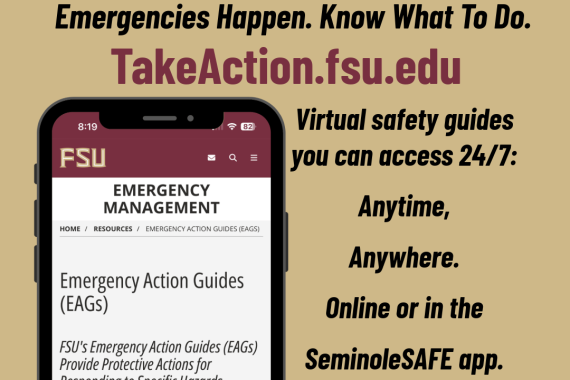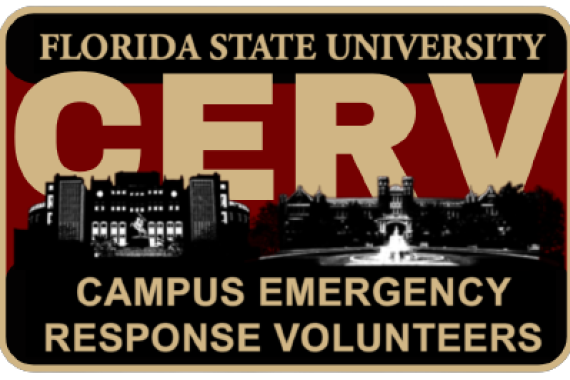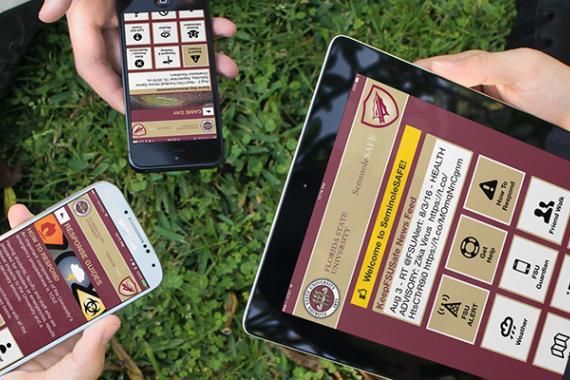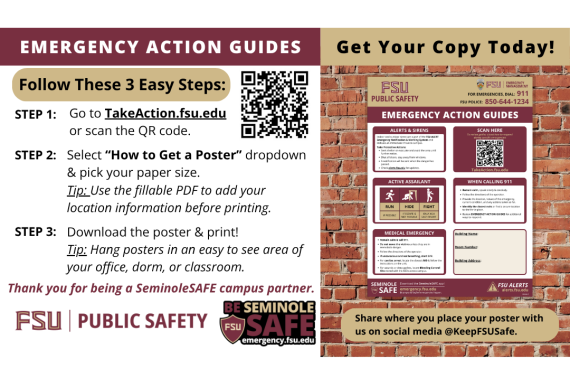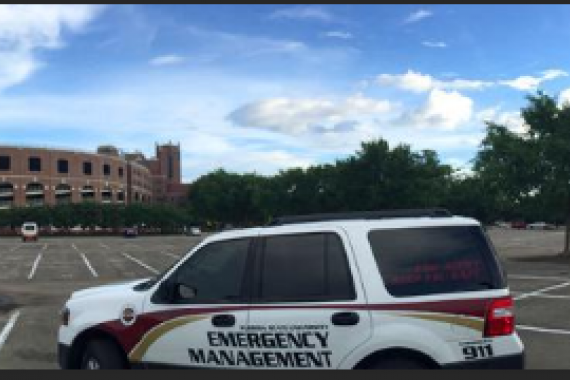More Weather Hazards
Tropical Storms & Hurricanes
Tornadoes
Thunderstorms
Flooding
Lightning
Drought & Wildfire
Earthquakes
Extreme Temperatures
After a Severe Weather Alert:
Seek Shelter:
- Move to designated safe areas or interior rooms away from windows during severe weather, such as bathrooms and locker rooms.
- Avoid large open spaces and stay low to the ground.
- Check the local weather station or stay connected to reliable weather updates from FSU Alerts.
- Be aware of changing weather conditions.
During Severe Weather:
Stay Alert:
- Protect yourself from flying debris and seek shelter in low-lying areas.
- Stay away from downed power lines or electrical cables in standing water.
- Follow official communication channels for real-time information.
Find Shelter:
- Seek sturdy buildings or designated storm shelters.
- Avoid seeking shelter under trees or in open fields.
Power Outage Response:
Report Power Outage:
- Immediately report power outages to campus security or facilities management.
- Stay away from standing water and be wary of power surges when electricity is regained.
Use Emergency Lighting:
- Use flashlights instead of candles to avoid fire hazards.
- Ensure emergency lighting is available in designated shelters.
After Severe Weather:
Wait for the “All Clear” or “Severe Weather Has Passed” Messages:
- Be cautious of hazards like downed power lines and debris.
Check for Updates:
- Stay updated on post-weather conditions and any further alerts.
- Follow guidance from emergency services and campus officials.


